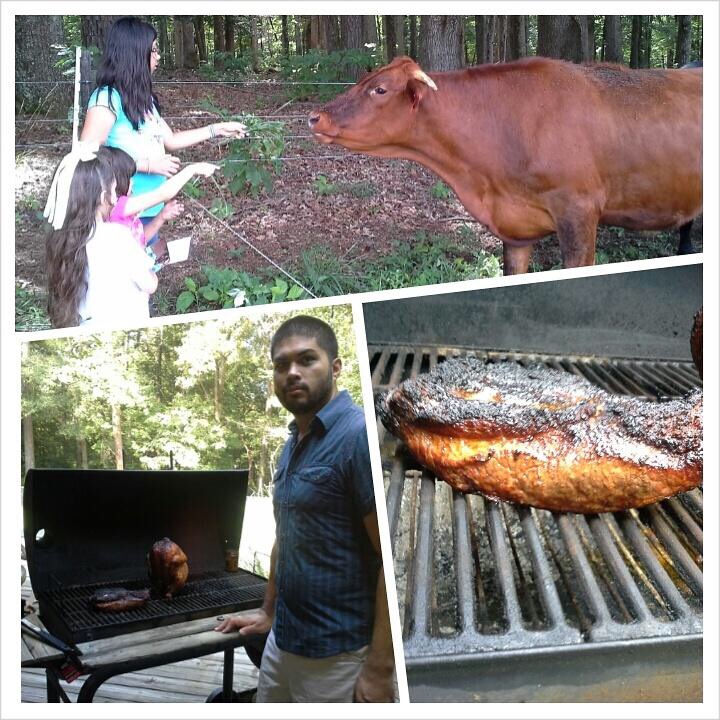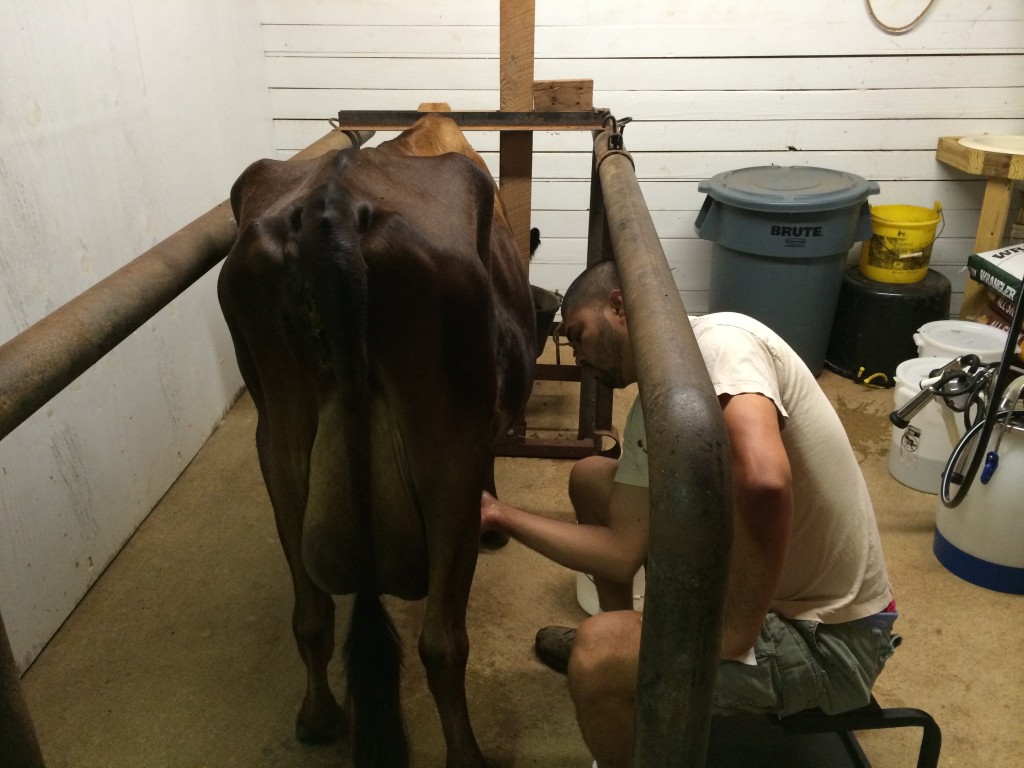http://instagram.com/p/sDue3HDgn8/
Yesterday when I went to move the cows, I found that #1 had had a new little calf. She’s a pretty little heifer and is already nursing which for our system is about the limit of our involvement in the birthing process, making sure the calf is nursing. It’s always a good day when we have a new calf on the farm but having another female Benjamin baby, off of another good mother, is an extra blessing because this will be another replacement heifer for our farm. In two years this little cow will be having cows of her own and our good blood lines will continue. I’ll update this blog post with her tag number once I tag her today.
http://instagram.com/p/sGJP_Fjgqz/
As promised, she’s number 45.
Saturday was an interesting day on the farm. My day started at 1:30am when I woke up from sleeping with Spork in his bed. I’d read another chapter of Name of the Wind to him and fallen asleep in his bed. Some stress over managing some of my stuff had pulled me out of sleep and unfortunately once I’m awake I’m done so I worked on the computer for a bit. Then at 3:30 I got up and did my workout till 5. I then milked our milk cow, fixed a broken paddock that the cows had destroyed, then moved the cows water, fly control, and mineral feeder. The cows themselves were already moved from when they broke the paddock. I then made and ate breakfast (my bacon, my eggs, my tomatoes, it doesn’t get any better!) then did some computer work till the sun came up. Once there was daylight, I fed the pigs and the chickens. Then I took our truck and trailer and made a run to an extra farmer at the farmers market who needed to get rid of avocados. This was someone Miguel had talked to and had already worked out the pickup. I was just the delivery driver. I was able to work on my horrible Spanish (comida pa puercos?) About 4-5000 pounds of avocados were loaded onto the trailer. You can see what we had below.
http://instagram.com/p/sDtih7Dgl5/
Since I was already at the market, I picked up from my four regular farmers which was an entire truck load, all hand loaded and a lot of it heavy watermelons. I had to hurry to get everything done because when I got back I came back to the farm and met another blogger who interviewed me for an hour and a half while we conducted a farm tour. He was nice and I look forward to seeing what he writes up. I then went to meet a potential intern to interview him and instead ran into a deputy sheriff who was in the middle of a man-hunt which likely included my farm. Apparently there were deputies with K-9s searching my woods as we spoke looking for this guy. I got a description of the guy and then spent the next two hours locking down our houses, barns, and renters houses, and neighbors house who was out of town. At the end of two hours, I and my neighbor were the only one to see the fugitive but I couldn’t arrest. Shame too because I had him right in front of me and could have gotten him. However, good citizen or not I’m taking one for the team on that level unless he’s threatening me or mine. So I left the deputies to continue the manhunt (he got away completely) and went to grab lunch before Angie’s closed at 2. We got there about 1:50.
Once I got back from Angie’s, Dustin and I unloaded the avocados and took the rest of the truck load of food to the cows so they could have lunch. Once unloaded and damp from rain and sweat, we took the truck and trailer back to the two different farmers markets and picked up another full truck and trailer load of food and brought it back home after stopping back by Angie’s to pick up from her which we do six days a week. I also took some time to visit with my farmers and to deliver a present to one of my farmers that I’d made for him about a month ago. He was very happy so that was nice.
Once home, we took another look for our fugitive and then quickly showered and dressed to head over to White Deer Park to attend Miguel’s daughter’s birthday party.
http://instagram.com/p/sEzJRqjghi/
We showed up and were handed heaping plates of awesome food. Then SWMBO called and I discovered I hadn’t been listening closely when we’d talked before and I needed to be home at 6:30 so no fugitives would be in the house when she came home with the kids. We high tailed it back home, effectively eating and running out on the party which was very bad, but made it home a few minutes before the Mrs.
Dustin, SWMBO, and I then proceeded to share a bottle of mead and sit around the table discussing home school, politics, etc. SWMBO and Carter recreated a skit that had been done at Co-op about heraldry and they compared it to our modern symbols we use like the Nike swoosh. SWMBO scampered off to bed and Dustin, Spork and I played a partial game of Superfight before Dustin went home and I took Spork to bed where we watched a couple of YouTube video before I fell asleep.
Alas, today has started at 1:30 again since in all the above didn’t really solve anything that was keeping me stressed. But today is another day. My intern didn’t make his interview yesterday so I’m giving him a working interview today which means I’ll have some help and we only have to pick up from one market. We will have to feed a lot of food today though so the old back is going to have to keep at it another day. At least I was able to get my post done.


